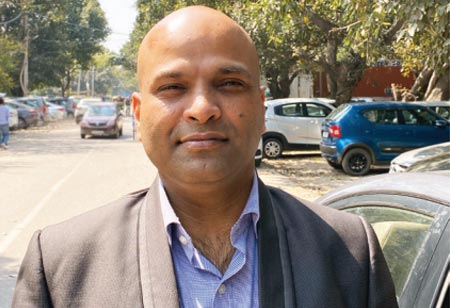In January 2019, the government initiated the National Clean Air Program (NCAP), a five-year action plan committed to curbing air pollution. By creating a nationwide air quality monitoring system and through enhancing citizen awareness, Delhi is slowly but surely on the path to reclaiming its share of fresh clean air. The various anti-pollution measures undertaken in the last few months were a major source of motivation for those combating the enormous air pollution in the city. But there is still much to be done within the Indian contextual framework to effectively address the perils of aerial pollution and meet the air quality standards laid down by the WHO.
Pollution, the foremost catalyst of the sinister global climate change, is now one the most urgent concerns faced by India. With about 17% of the world population residing in India, the country is home to the most polluted cities, and witnesses the highest number of deaths and diseases in the world related to air pollution. With an approximate 100 % of the national populace residing in areas exhibiting PM2.5 concentrations that are above the permitted level, the dire state of affairs calls for an immediate and proactive remediation. To achieve this end, technologically – charged scientific solutions hold vast and promising potential in tackling and curtailing the numerous hazards of air pollution.
Technology if judiciously optimized can most effectively neutralize the dangers of air pollution. As per the revealing brought to light by the Exponential Roadmap, disruptive ICT solutions like the Internet-of-Things (IoT) can enable the essential reduction of carbon emissions level by the year 2030. ICT has numerous implications in the fields of transportation, electricity grids, manufacturing, agriculture, etc. And since, ICT being a Carbon-thin sector that makes up for 1.4 per cent of the global CO2 emissions; it can dispense a feasible new-age mechanism for India and the world in monitoring pollution levels and reducing its carbon footprints.
There is also an urgent need to depart from traditional modes of mobility that rely on fossil fuels and shift to clean fuel alternatives. ICEs are one of the biggest sources of rising pollution levels across the planet but technological innovations have also led to the emergence of noiseless zero-emission EVs or Electric Vehicles
as per the need of the hour. Most of the developed countries are on the road to achieving total electric mobility in their bid to curb the global climate change and air pollution. India too has identified the immediate need to switch to eco-friendly and sustainable mobility options, and is currently in the process of building a substantial and self-reliant EV sector.
India can also learn from other effective and relatively successful models of countries such as china which planted vertical forests that are capable of absorbing 25 tonnes of CO2 every year while producing 60 Kg of O2 on a daily basis. China also managed to control its pollution plague by creating experimental 100 m high smog free towers that absorb air pollutants and releases back clean air, an initiative of the Chinese Academy of Sciences. Through a series of measures concentrated on energy infrastructure optimization, coal-fired pollution control, and emission controls, many countries are achieving impressive air quality standards. Copenhagen, the capital city of Denmark, has envisioned becoming a carbon-neutral country by 2025. It intends to accomplish this by encouraging non-polluting and emission free mobility options such as bicycles over ICEs. Simple, yet effective.
-
The primary step would be to develop a scientific understanding of the temporal and spatial factors that are causing the pollution in a particular geographic location
Amit Bhatnagar, Founder, Swasthgram Foundation (Shudhvayu Innovation)
Combating air pollution necessitates a diligent and meticulous three step plan of action. The primary step would be to develop a scientific understanding of the temporal and spatial factors that are causing the pollution in a particular geographic location. The second step would involve the development of local, regional, and national-level legislation and technological compliance to enforce clean air initiatives both in the public and private sphere. The third step calls for a recalibration and rework of social lifestyles and popular approach that contribute to amplifying the pollution levels. It is also important to debunk the commonly held yet incorrect point of view that cutting down on pollution tampers with economic growth.
Tech companies assay the role of problem solvers by offering AI-powered smart air-purifiers that can proactively engage in reducing the number of internal pollutants and provide us with the much needed reprieve of healthy and cleansed air. Moreover, the air inside your car is 5-6 times more contaminated than the air outside and traversing through dusty pathways implies inhaling dust particles and noxious fumes. Investing in a competent car purifier can help in maintaining the air quality by eliminating the highly toxic aerial impurities that are present in the vehicle.
Technology in the hands of humans has per se proved to be a bittersweet affair in the turn of the twenty first century. Excessive pollution of air, land, and water has culminated into an unpredictable climate transformation which may have disastrous and irreversible implications. The pollution and pilfering of the earth’s natural resources has been a direct result of man’s unchecked industrialization and the heartless mechanization of nature and life. It is perhaps mankind’s final opportunity of neutralizing the negative impact of urban progress through technology to overturn the ramifications of the so-called social progress and economic development.
